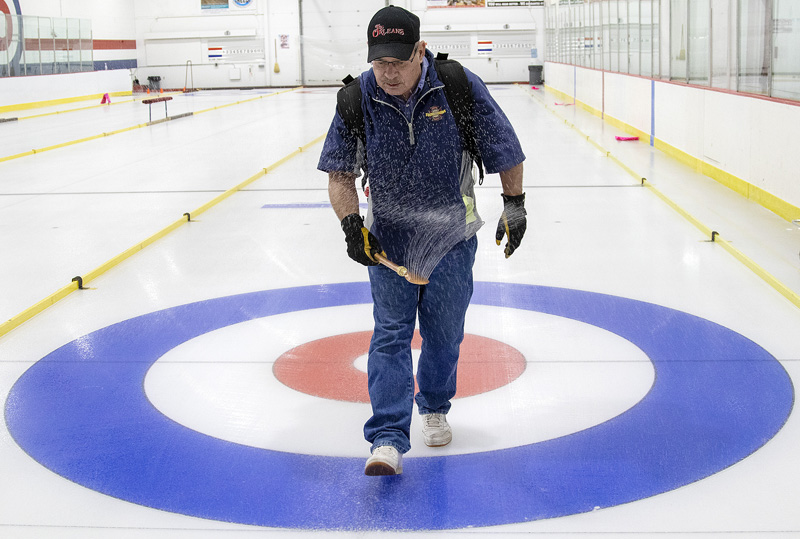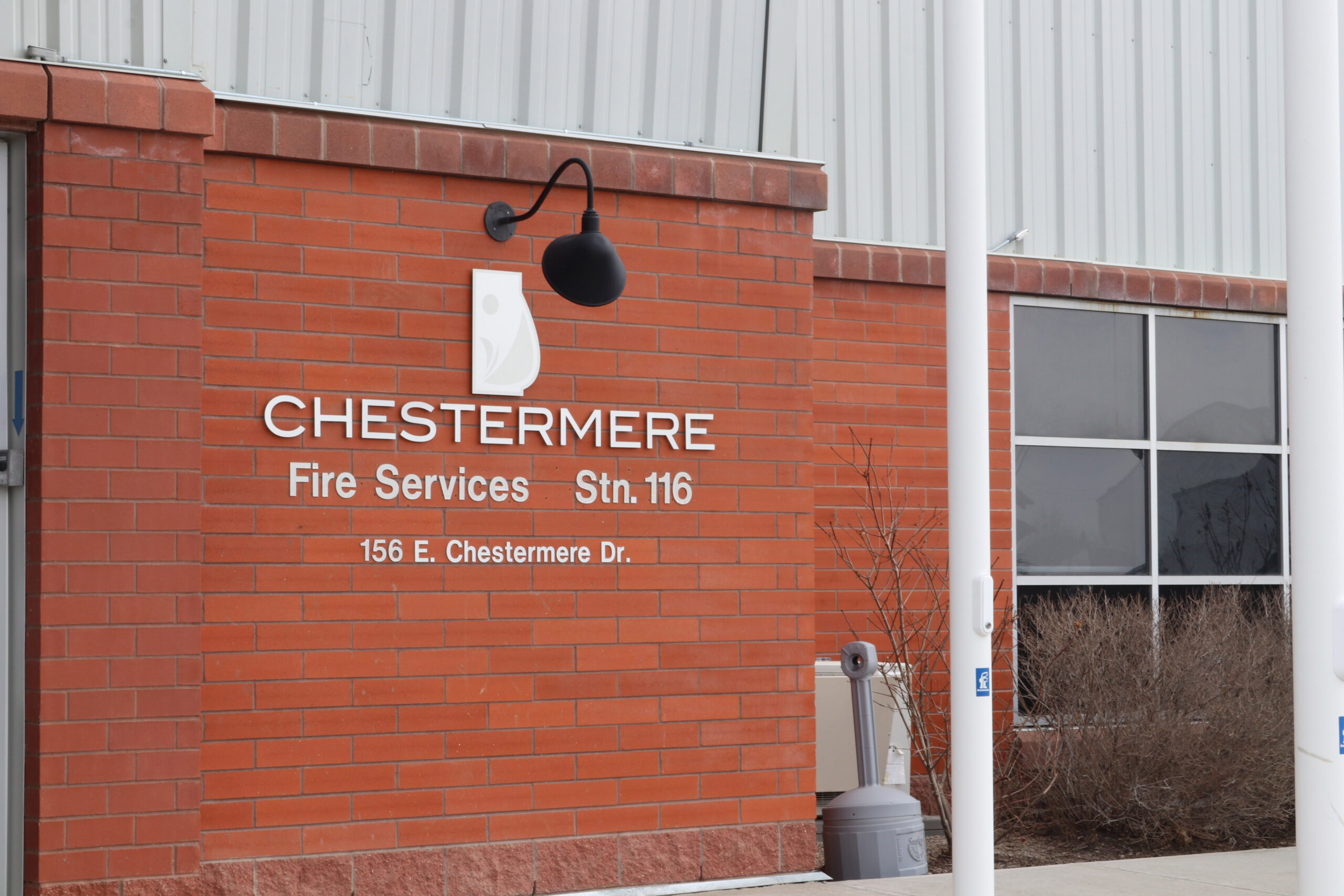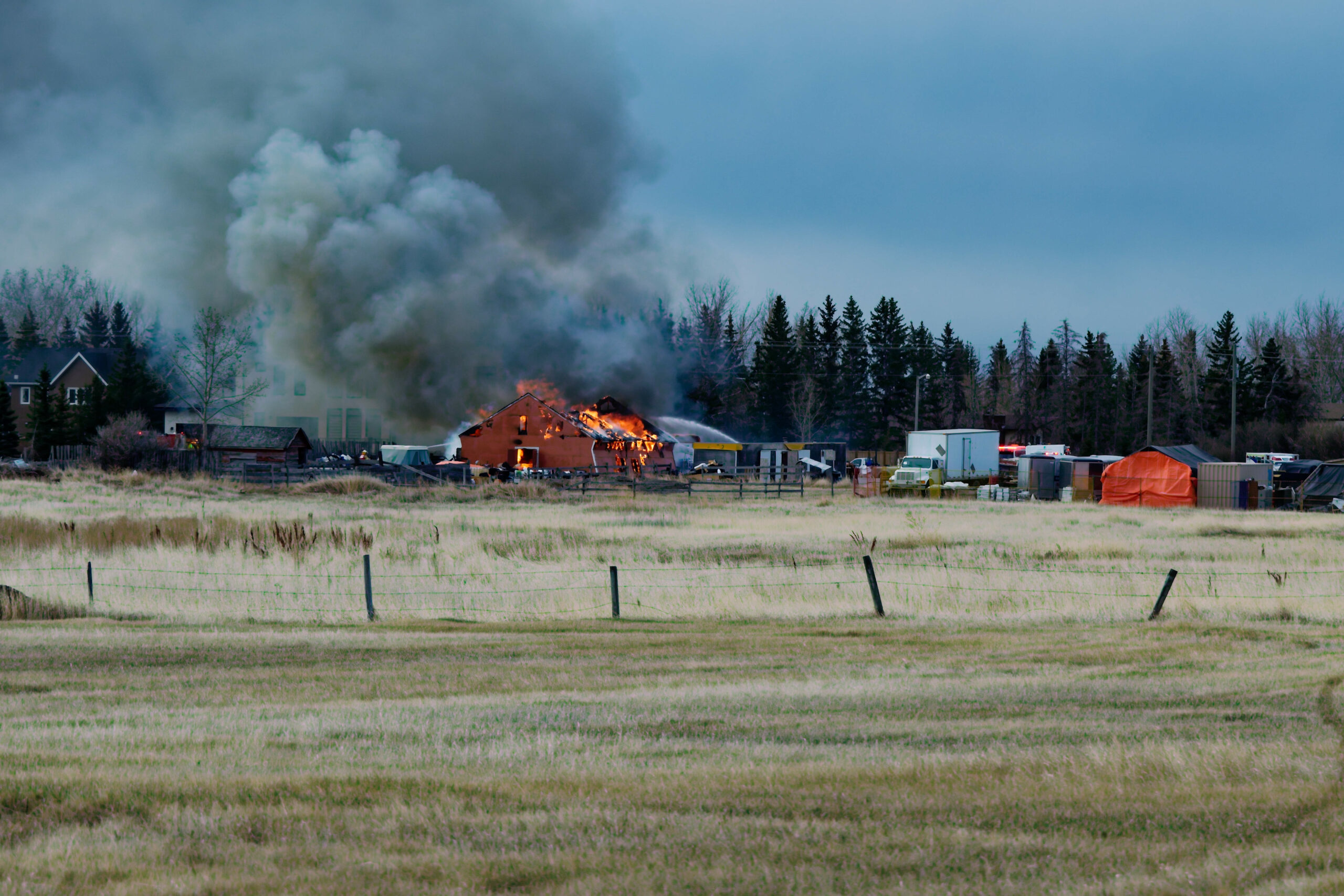
There is an art to preparing a sheet of ice for curling.
Before a single rock can been thrown hours of work must be done to get the ice just right for competition.
At the Chestermere Curling Club that work is done by Head Ice Technician Brian Nociar, his son Trevor Nociar and George Lorencz.
“Our job would be to try and make the ice predictable,” said Brian.
Unlike a skating rink where the goal is a smooth glass like surface, in curling the sheet is covered in a pattern of bumps know as pebbling.
The pebbled ice surface does two main things, it reduces friction on the rock since it only touches the tops of the pebbling rather than sitting flat on the ice.
The pebbling also helps to create the characteristic curl of a thrown rock the sport gets its name from.
The Nociar’s have been maintaining the ice here in Chestermere for the past three years and maintained the ice at the Indus curling rink prior to that.
“Trevor and I have been doing ice for 10 or 11 years,” said Brian who has the first of four levels of ice technician training credentials.
The father son duo got their start helping out the ice technician in Indus.
“Years ago, the ice makers, wouldn’t give any secrets out,” said Brian, “everybody had their job, they would give you minimal information.”
He said that they just helped out when help was needed.
Over the past decade things have changed and ice technicians are a lot more collaborative sharing their skills and techniques to get the perfect sheet.
“If I go somewhere else, I will ask questions,” said Brian.
“I’ll snoop in their pebble room,” he said.
When the Ice Technician in Indus left, The Nociar’s stepped up to take over care of the ice.
“My son just said five words to me, ‘we can do it dad,'” said Brian.
They eventually moved to curl here in Chestermere because it was closer for them.
The first thing they noticed was that the ice wasn’t nearly the same quality as the ice they left behind in Indus.
“We decided well if we’re going to stay here two, three, four, five years, we would actually help them do the ice,” said Brian.
Which is when Brian and his son started volunteering to maintain the ice with the help of Lorencz.
Regardless of where the sheet of ice is there are some universal challenges to making great curling ice and some that are unique to Chestermere.
When the ice technicians arrive at the rink, the first thing they do is clean the ice.
Any kind of debris on the ice, whether it is lint from clothing, gravel and dirt from shoes or even worse road salt, affects the pebbling and how the rock curls.
“First thing we do is mop the sheets,” said Brian.
Next the sharpen the five-foot-long scraping blade and scrape all of the old pebble off of the sheet.
“Whatever pebble that’s on there has to go so we’re just left with a flat sheet of ice,” said Brian.
Once they sweep the sheet, ensuring that it is a clean flat surface, the real art and skill of applying the two kinds pebble starts.
Brian described the first pebble as being like foothills while the second is more peaked like mountains.
They use water warm water, between 80 and 90 Degrees Fahrenheit for the first pebble and 135 Degrees Fahrenheit for the second.
The water starts out with a Ph of 7 but turns slightly acidic as it hits the air during application.
“Its actually acidic water is what you want to use,” said Brian.
The water to create the pebble is applied by Brian who wears a tank on his back with an applicator wand and pebble head that is covered in small holes to spray out the water.
To apply the pebble, he walks backwards down the sheet waving the application wand face up to spray the water upwards which then falls and freezes on the sheet creating the pebble.
The whole process takes about 35 seconds to complete.
Brian said that they like to try and put the pebble on as close to game time as they can, preferably within half an hour of the start.
Once the pebble is applied, they use a device called a nipper to trim the tops of the peaks of the second pebble.
“Anytime you have a pebble that’s hard it’ll (the rock) just knock it off and mash it in,” said Brian, “this nipper will cut it clean.”
The use of the nipper has the added effect of making the sheet faster as well.
After three years of working the ice, Brian thinks they have a pretty good system in place.
“I think we got kind of the magic number for this place,” he said.
Brian said that the more pebble that is put on the sheet affects how the rock performs.
“The least amount of pebble the better,” he said, “it’s got to be crisp clean.”
“There’s always going to be spots where it runs a little bit straighter or doesn’t curl as much but that’s up to you to figure that out during the game,” said Brian.
The work to maintain the ice has to be done daily to keep the ice clean.
“It’s not hard you just have to spend a lot of time at it daily,” said Brian.
“If you’re lazy that way it’s going to catch up with you really quick,” he said.
What really helps the ice technicians out is how the curling club members here have taken ownership of the rinks.
“People are willing to help,” said Brian.
“I’ve got everybody sweeping their sheets after the finish a game,” he said.
With the quality of the ice kept as high as possible, the games played in Chestermere are more competitive as new players and average teams have an easier time making their shots, all thanks to the hard work of the ice technicians.









